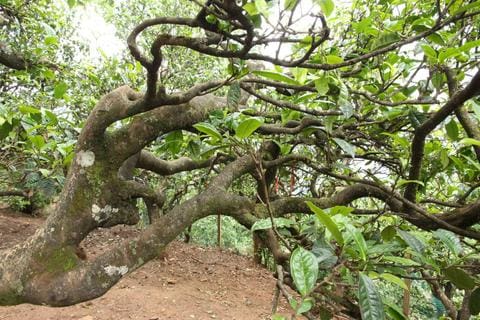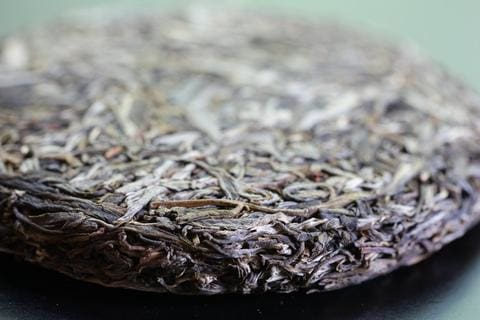
3 Fun Facts You (Probably) Didn’t Know About Pu’erh Tea
In continuing with our series of articles on pu’erh tea, today we will present to you the five things you (probably) didn’t know about pu’erh.
1. Pu’erh Tea is not the same as Aged Tea

Aged tea is any tea that has been stored for an extended period of time under conditions that change its properties, such as its flavors or chemistry. While it is true that some pu’erh teas have been aged, there are many different kinds of teas that meet this qualification. For example, it’s not uncommon to find aged white tea or aged oolong, neither of which are pu’erhs.
Furthermore, some pu’erh teas are not even aged at all! It is true that pu’erh is crafted for the sake of long-term storage and aging, but there is a kind of pu’erh known as “sheng” (or “raw”) that can be as fresh as any other tea, such as this 2017 raw pu’erh.
So if pu’erh tea is not the same as aged tea because some of it is aged and some is not, then what is it?
To put it simply, pu’erh is a fermented tea that comes from Yunnan province. The origin is important because there are other kinds of fermented teas, such as Lao Liu Bao, that are not technically classified as pu’erh.
2. Pu’erh Tea does not Taste Moldy
It’s a misconception to think that pu’erh has a “moldy” taste. Some people even think it tastes like earth, mud, forest floor, or mushrooms, but this too is mistaken. It’s important to realize first and foremost that if a tea doesn’t taste right or even tastes bad, then it might very well be bad tea. In the case of pu’erh, if it isn’t crafted well, it can very well be a moldy tea. Fortunately, good, artisan-crafted tea from trusted vendors can help ensure that this doesn’t happen.
So what does pu’erh taste like?
Pu’erh has a wide range of aromatic possibilities, from dates, figs, and stonefruit to honey, raspberry, or even caramel! It is true that some kinds of pu’erh can have an earthy-like fragrance with flavors ranging from root vegetables to mushroom soup, but it should never have a bad flavor.
Figuring out your pu’erh type and tasting notes is a matter of experimentation, but it can be helpful to know that there are roughly three things that generally influence its taste.
First, pu’erh type makes a difference. Raw pu’erh tends to exhibit the first set of tasting notes, falling in the fruitier category, and ripe pu’erh tends to showcase the second set of tasting notes, tending more towards earthiness.
Second, pu’erh region makes a difference. There are four major growing regions for pu’erh (Jingmai, Menghai, Mengku, and Yiwu), and each region tends to be characterized by its own distinctive style and flavor range. Familiarizing yourself with each of these regions and what they offer can go a long way towards discovering your favorite pu’erhs.
Third, pu’erh age makes a difference. Ripe pu’erhs usually undergo the greatest changes in their flavor profiles over time. A newly harvested ripe pu’erh can very easily taste more like a green tea, but when stored properly, that same pu’erh can surprise you with very different flavors each year, tasting more like a yellow tea, oolong tea, or even a black tea!

3. Pu’erh becomes Chemically Different from Other Teas
Some tea drinkers notice that pu’erhs can taste a little sweeter than other kinds of teas. Fortunately, this isn’t just their imagination. The reason why pu’erh has such exotic, even sweeter flavors is because it is different from our non-fermented teas.
Non-fermented teas are rich in antioxidants known as catechins. While antioxidants are certainly beneficial for us, catechins are also responsible for a bitter, astringent taste, which usually happens most often when we infuse delicate teas at temperatures that are too high or when we (accidentally) infuse our teas far too long.
Due to the fermentation and aging processes, pu’erh tea begins undergoing a chemical transformation after 5 years of storage. The catechin levels begin dropping, but new health-promoting phytochemicals are created in their place. Not only can pu’erh taste better as it ages, but it can become surprisingly health-promoting in other ways.
The two most important phytochemicals known in aged pu’erh are theabrownin and lovastatin. The first of these is responsible for the brown color of older pu’erhs. Theabrownin has been shown in laboratory settings to aid in the breakdown of fats and the excretion of cholesterol. Lovastatin, by contrast, is a naturally-occurring statin, a chemical that helps promote healthy cholesterol levels and lower cardiovascular risk. This is not a recommendation to use pu’erh to treat medical conditions, but it does help explain why we love a good pu’erh with our dinners!
Hopefully this clears up some of the pu’erh misunderstandings out there and piques your interest in this unique, healthy, and flavorful type of tea!
